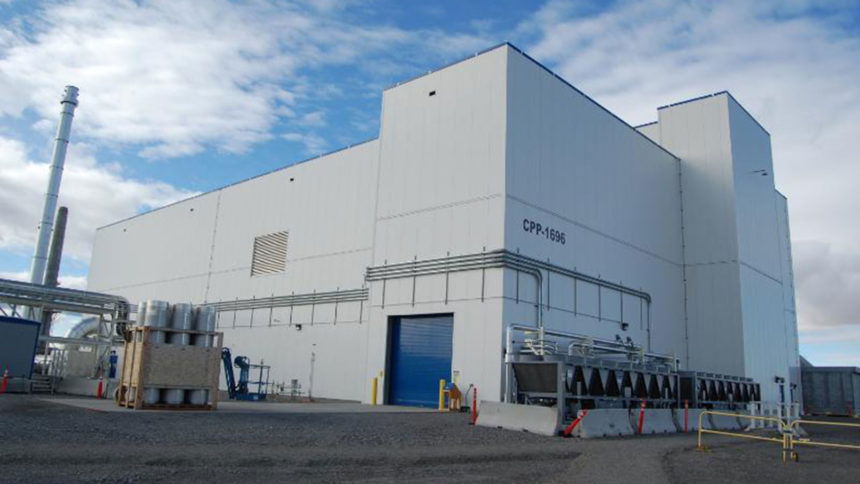Mock-ups prove effective in testing Idaho Waste Treatment Facility

IDAHO FALLS, Idaho (KIFI/KIDK) - Cleanup contractor Fluor Idaho has been working with a local small business to create mock-ups of critical equipment needed to treat 900,000 gallons of liquid radioactive waste from underground tanks at the Department of Energy’s Idaho National Laboratory Site.
Diversified Metal Products, an Idaho Falls-based metal fabrication shop, developed mock-ups of the Integrated Waste Treatment Unit’s (IWTU) primary reaction vessel, the Denitration Mineralization Reformer (DMR), and a process gas filter as the Environmental Management Program prepares the treatment facility for operations.
The mock-ups have been used to test the ability to decontaminate the facility’s processing cells prior to changing filter bundles during eventual IWTU operations. They were also used to train radiological protection personnel and to develop remote tools for anticipated maintenance activities.
Engineers used the DMR mock-up to assess the capability to decontaminate the vessel during operations in the event that waste treatment operations are curtailed to replace equipment or to empty the reaction vessel, according to Fluor Idaho Chief Engineer Joe Giebel.
The engineers also tested decontamination technologies, which are needed so engineers and operators can replace equipment, such as valves, during actual waste treatment operations.
“The testing of both wet and dry decontamination technologies was quite successful using the mock-ups,” Giebel said.
The wet decontamination technique involves transferring liquid waste to a vessel so it can later enter the steam reforming unit. In the steam-reforming process, superheated steam enters small nozzles of the DMR to suspend and fluidize billions of tiny beads. Liquid waste is injected among the superheated beads, which are coated with the waste and converted to a carbonate product, like the creation of a pearl.
During dry decontamination activities, a dry vacuum system transfers a granulated solid waste from the DMR to a canister fill system.
“Using mock-ups has been beneficial in resolving technical challenges,” Giebel said. “Testing on a full-scale mock-up gives us a sense of realism that you can’t get from a computer-generated graphic.”
Diversified Metal Products previously worked with IWTU’s engineers on a mock-up of the DMR to create prototypes of the auger-grinder, which transfers treated waste material to downstream processes. Testing by the small business led to a successful design for the auger-grinder, with more robust “teeth” and an improved motor.
The IWTU has undergone six demonstration runs since it was built. During the latest 50-day run, operators converted more than 63,000 gallons of a liquid simulant into a dry, granular solid.
Following additional equipment modifications and installation of new filters to improve the efficiency of the process gas filters, the IWTU will conduct another run next year before actual waste treatment operations begin.
